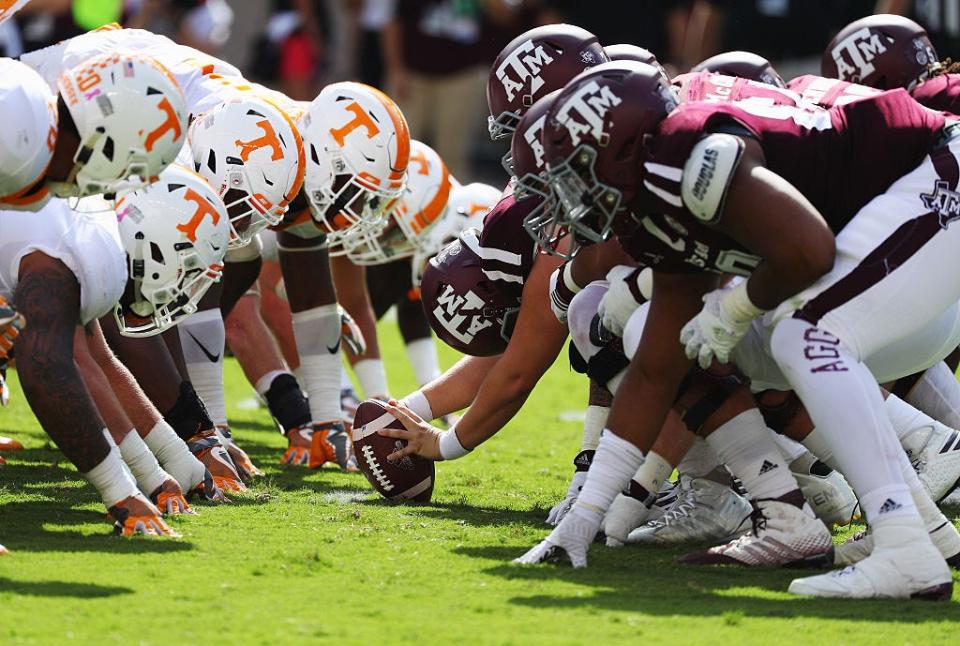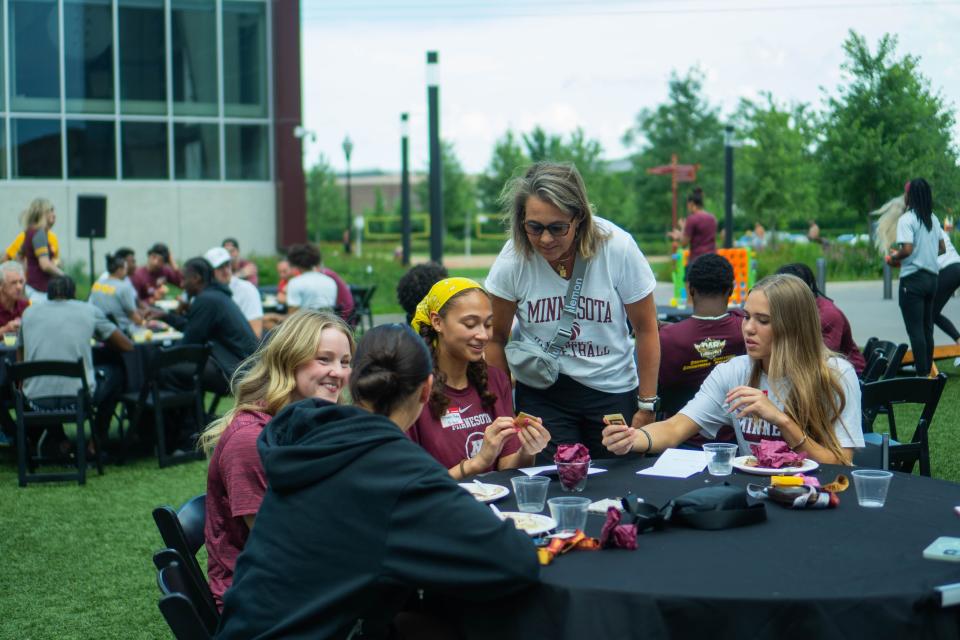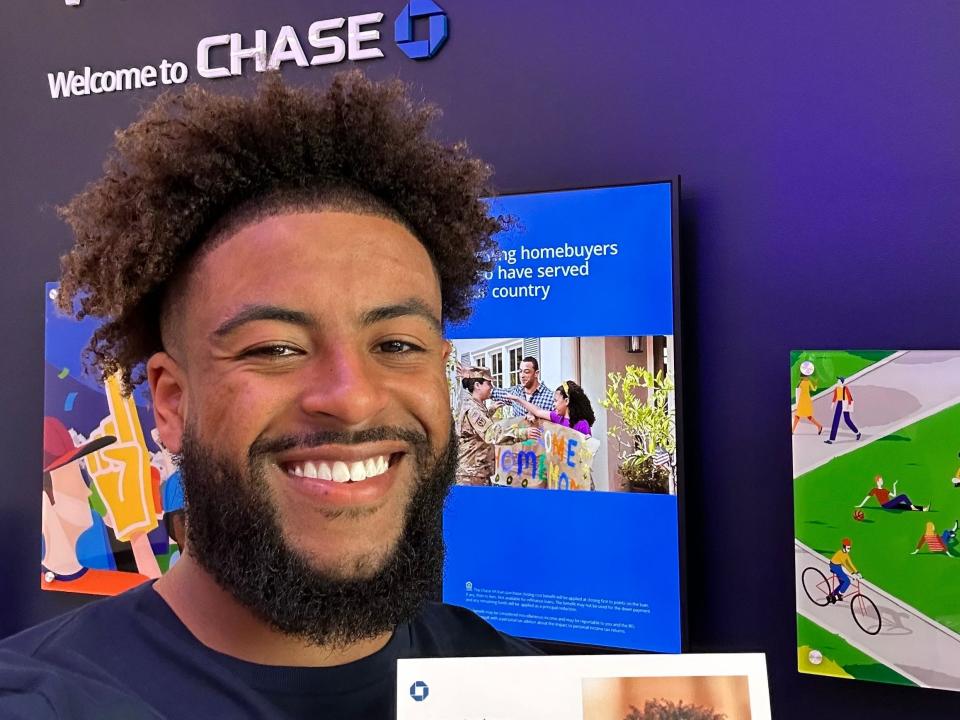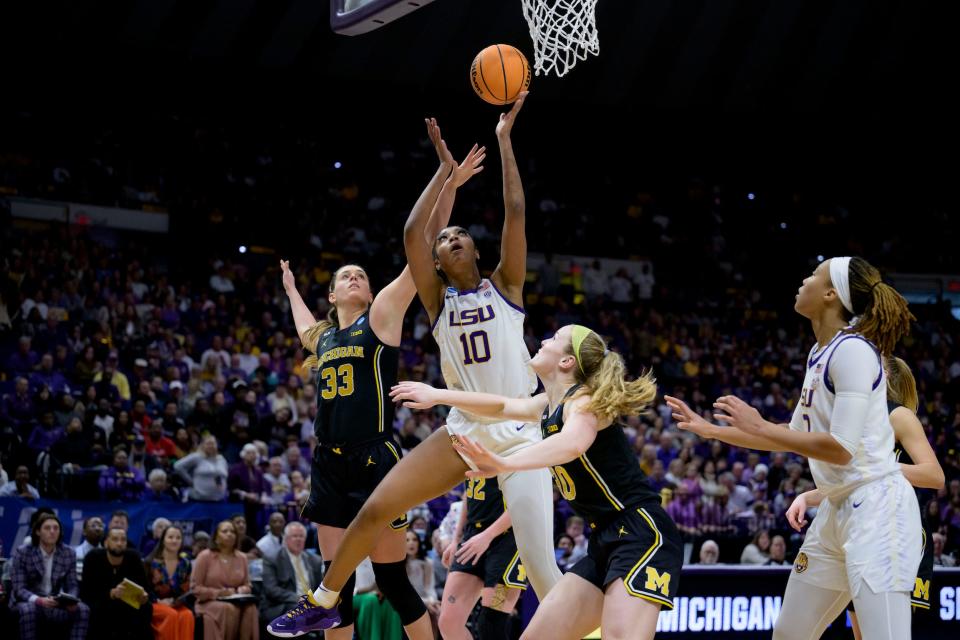How NIL deals and brand sponsorships are helping college athletes make money

Student-athletes gained in 2021 the right to make money from their names, images, and likenesses.
The billion-dollar industry has exploded thanks to brand deals, startups, and donor-backed collectives.
Here's a breakdown of Insider's recent coverage of student-athlete marketing and NIL activity.
Name, image, and likeness, or NIL, has redefined college athletics in the past two years. Student-athlete influencers have become key parts of marketing strategies for companies and capitalized on their athletic performance to bring in previously unattainable levels of fame and fortune.
College athletes make money by posting branded content on social media and attending events with fans. A few athletes bring in millions of dollars in deals each year, but most athletes make a couple hundred dollars for attending an event or a social media campaign.
The NIL market is worth an estimated $1 billion annually, according to NIL company Opendorse. The industry's growth has been driven in large part by collectives. These donor-backed groups facilitate NIL opportunities like autograph signings and appearances at fundraisers and account for 80% of the money flowing to student-athletes.
Read more about the flow of NIL money in college sports
The remaining 20% comes from brand deals, per Opendorse. Men's basketball players make the most from brand deals, the company has found.
In addition to collectives, new startups and existing companies have popped up and pivoted to become major players in the space, helping athletes design and sell their own merchandise, connect with brands for campaigns, and make money on jersey sales.
Read more about the startups and companies shaping NIL
How NIL became a major factor in college athletics
On July 1, 2021, after a decades-long fight, student-athletes across the country gained the right to make money from their NIL thanks to a flurry of new state laws and an NCAA policy change.
What happened next was a mad rush of student-athletes, small businesses, national brands, and startups looking to cash in.
Some athletes in widely followed sports scored deals worth five or six figures. But many of the 460,000-plus student-athletes across the US ended up working with local businesses like restaurants or participating in one-off marketing campaigns with bigger brands, and receiving free products, gift cards, or smaller cash payments, rather than big paydays, for their NIL promotions.
Read how much college football player Pheonix Sproles earned in the first year of NIL
In addition to brand deals, student-athletes have run branded training clinics and have been paid for appearances and autograph signings.
Many of these fan engagement events have been put on by collectives, or donor-backed groups that have popped up at most colleges and universities to organize NIL opportunities for student-athletes.
Many collectives were founded during the first year of NIL but gained footing in year two. Though some in the industry condemn these organizations as "pay for play" models, collectives say their existence is necessary to remain competitive in recruiting, leaders of these organizations have told Insider.
"It's become a recruiting advantage to be a school that's more permissive with NIL activities," Kristi Dosh, a consultant and writer who founded BusinessofCollegeSports.com, previously told Insider.
Read more about how NIL collectives pay student-athletes, fundraise, and more from leaders of two of these groups

Unlike professional influencers, college athletes tend to have small audiences on social media. In the influencer world, these athletes would be classified as "micro" (generally under 100,000 followers) or "nano" (generally under 10,000) influencers — an area of increasing focus for marketers.
Read more about how student-athletes with small social-media followings are cashing in on the NIL gold rush
And it's not just college athletes who are benefitting; some athletes are signing brand deals while they're still in high school.
One company that leaned into nano-influencer marketing for its first student-athlete campaign was The Vitamin Shoppe, which ran a campaign with 14 college players, all with under 10,000 Instagram followers.
Read more about how the company boosted social-media engagement by hiring college athletes from niche sports like golf and cheerleading
Some college athletes have become social media stars, especially female students. While USC's Bronny James has made the most from NIL, stars like LSU's Olivia Dunne and Angel Reese have amassed millions of followers across platforms, leading to big payouts and six-figure brand deals. Women's basketball players have an especially high engagement rate, with athletes including Paige Bueckers, Caitlin Clark and Flau'jae Johnson becoming household names in NIL.
How much student-athletes are earning from NIL
The student-athletes who are already making life-changing money tend to play for Power Five schools. But some players have leveraged their brands to create content and gain significant followings.
Insider spoke with several student-athletes to learn how they built their followings and secured deals, how much money they make, and what materials they use to pitch themselves to brands.
Learn how much student-athletes have made from NIL deals:
Check out the documents and outreach templates they use to land brand partnerships:

Student-athletes are the 'best-performing subset of influencers'
A July 2022 study by influencer marketing company Captiv8 showed that student-athletes have outperformed the engagement benchmarks of standard influencers on social media through the first year of the NIL rules.
"We started to see anecdotal evidence of athletes outperforming influencers by wide margins," Captiv8's director of partnerships, Bryce Adams, told Insider. "The results of the study showed us that college athletes are the best-performing subset of influencers available right now to brands."
Read more about Captiv8's study on student-athletes outperforming standard influencers on social media
Captiv8's study compared standard influencer benchmarks on Instagram, TikTok, and Twitter with data on 312 student-athletes. It showed that student-athletes received two times more engagement on Instagram, five times more on TikTok, and 12 times more on TikTok.
A recent study from Opendorse found that freshmen had the biggest earnings in the second year of NIL, bringing home 521% more per deal than the year before, the platform's NIL and business insights manager Braly Keller told Insider. The freshmen earned twice as much money per deal on average than all other grade levels, the report found.
Big events like March Madness can bring massive popularity and NIL deals
The first March Madness tournament following NIL saw big returns for athletes. Some brands reached out to athletes as the tournament progressed like Buffalo Wild Wings' deal with St. Peter's University star Doug Edert as he led the No. 15 Peacocks to the Elite Eight.
In March 2023, most of the teams in the Final Four already had lucrative deals under their belts and strong NIL collectives backing them.
Read more about how NIL and the transfer portal have impacted March Madness
But unprecedented viewership and popularity for women's basketball translated to social media: LSU's Reese gained more than 650,000 followers during the tournament and has since signed deals with companies including Amazon, Airbnb, and PlayStation.

Marketers are navigating a patchwork of regulations
Still, colleges, student-athletes, and brands are still trying to navigate a web of state laws and university guidelines around what players are and aren't allowed to do with their names, images, and likenesses.
Some colleges and universities have developed policies to stop student-athletes from making brand deals that would interfere with their own lucrative sponsorship contracts.
A deal requiring an athlete to "wear products competitive to Nike during team activities – ex. practices, competitions, media, team travel, community service, photo sessions, team-building activities, etc." could violate Ohio State's rules, for example. The university also said students should not "promote beverages competitive to Coca-Cola on-campus."
Read more about how colleges are taking steps to limit the deals student-athletes make with brands, as they look to protect their own sponsorships
"It is messy," Blake Lawrence, CEO of sports-marketing platform Opendorse, previously told Insider. "If a student-athlete at an Adidas school that signs a deal with, let's say, Lululemon shows up to a press conference with a Lululemon hat and shirt on, is that a violation of the team's contract with Adidas? Those are the things that people are trying to figure out."
Startups and other companies are shaping the future of NIL
As with any new industry that has a variety of regulations, a wave of startups and established companies have rushed in to help universities, student-athletes, and brands succeed in the field and avoid missteps.
Numerous marketplaces have been established to help athletes and brands find one another. Companies like Opendorse, OpenSponsorship, and Postgame allow brands to post a campaign just like a job listing, after which athletes can apply and track the deal progress through the platform.
Student-athletes can design and sell their own merchandise through platforms like NIL Store and Nillie.
Learfield, a firm that helps schools monetize their IP in categories like digital media and stadium signage, has added NIL sponsorships and student-athlete storytelling to its brand work.
Read Insider's list of the 20 NIL companies helping student-athletes, colleges and universities, collectives, and brands navigate an ever-changing industry
Colin Salao contributed additional reporting.
Read the original article on Business Insider
